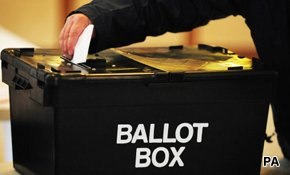Today’s announcement that the referendum on the Alternative Vote will take place next year prompts an obvious question: what difference would AV make?
Nobody can be certain until the first AV election takes place; but recent YouGov research for Channel 4 News throws some light on this issue.
YouGov asked about second preferences in our final pre-election poll - and again last week.
These were our findings in election week.
| Second preferences BEFORE election (%) | Con voters | Lab voters | LD voters |
|---|---|---|---|
Con | - | 6 | 27 |
Lab | 5 | - | 42 |
Lib Dem | 45 | 64 | - |
Others / Don't know / would not vote | 50 | 30 | 31 |
(Source: YouGov 4-5 May 2010)
If we apply these figures to each constituency, then we can see that both Labour and the Liberal Democrats would have gained ground, compared with the actual result of the election. This is because almost two in three Labour voters would have given their second preferences to the Lib Dems in Conservative-Lib Dem contests, while Lib Dem supporters preferred Labour rather than the Tories by a margin of three-to-two in Lab-Con seats.
| (a) AV estimate based on above figures | Seats | Change from actual result |
|---|---|---|
Con | 277 | -30 |
Lab | 269 | 11 |
Lib Dem | 76 | 19 |
Others | 28 | 0 |
The Tories would still be the biggest party, but with just an 8-seat lead over Labour. A Lab-Lib Dem coalition would have had an overall majority, with 346 seats together, and an overall majority of 38. A Con-Lib Dem coalition would have had a majority of 56.
Since the election, of course, the Conservatives and Liberal Democrats have formed their coalition. So last week, YouGov asked respondents again to state their second preferences. This time, far fewer Labour voters made the Lib Dems their second choice, while Lib Dem supporters were slightly more likely to give their second preference to the Conservatives rather than Labour.
| Second preferences AFTER election (%) | Con voters | Lab voters | LD voters |
|---|---|---|---|
Con | - | 6 | 38 |
Lab | 6 | - | 33 |
Lib Dem | 46 | 33 | - |
Others / Don't know / would not vote | 49 | 61 | 29 |
(Source: YouGov 27-28 June 2010)
Had these post-election, post-coalition second preferences applied in the general election, the position would be different. The Tories would be down just two seats, to 305 (they would have won extra seats from Labour, but lost three extra seats to the Lib Dems). The Tories' lead over Labour would have been 60 seats.
| (b) AV estimate based on above figures | Seats | Change from FPTP |
|---|---|---|
Con | 305 | -2 |
Lab | 245 | -13 |
Lib Dem | 72 | 15 |
Others | 28 | 0 |
The point of this is notional calculation to illustrate a wider point about AV: it makes a big difference what the relationship is of the two big parties to the third party. AV would certainly help the Lib Dems - but the relative impact on Con and Lab depends on the politics of the time.
Finally, we have looked at the impact of reducing the Commons to 585 seats and equalising electorates.
These were the average figures on election day two months ago:
Con seats: average electorate 72,300; average turnout 68.2%
Lab seats: average electorate 68,700; average turnout 61.2%
Lib Dem seats: average electorate 69,500; average turnout 67.2%
If the Commons is reduced to 600 MPs, then the average electorate would be 76,100.
Obviously the precise distribution of seats would depend on the precise new boundaries; but we can obtain a reasonable estimate by simply reducing the number of seats won by each party by the percentage by which their 2010 average electorate fell below 78,100.
| Result if Commons reduced to 600 MPs | FPTP | AV (a) | AV (b) |
|---|---|---|---|
Con | 291 | 263 | 288 |
Lab | 232 | 242 | 220 |
Lib Dem | 52 | 70 | 67 |
Others | 25 | 25 | 25 |
On First Past The Post, The Tories would be down 16 seats, Labour down 26, the LDs down five and others down three. The Tories would have been just ten seats short of an overall majority - rather than the 19 by which they were short on May 6th. And the Tories (291 seats) would have been able to outvote Lab+Lib Dem combined (284 seats). There would have been no question of a lab-Lib Dem, coalition; the Lib Dems bargaining position with the Tories would have been weaker - maybe David Cameron would now lead a minority Conservative government rather than a coalition?
If we now apply AV to a smaller House Commons, then...
AV (a) (pre-election preferences) There would be 263 Con MPs, 242 Lab and 70 Lib Dems. The Lib Dems could have combined with either Con or Lab to produce a majority coalition.
AV (b) (post-election preferences) Cons would have 288 MPs, Lab 220, Lib Dems 67. The Conservatives would clearly be in the driving seat. The combined effect of both changes (AV and smaller Commons) would have cost the Tories 19 seats, and Labour 38; the Lib Dems would have been up 10.
One final point. Although equalising the electorates helps the Tories, there remains a residual pro-Labour bias in Britain’s political geography, because turnout is significantly lower in Labour seats. So even if each Conservative seat has the same ELECTORATE as each Lab seat, Conservative seats will typically continue to contain more VOTERS.









